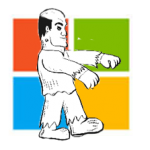 CNET reports that Microsoft is unloading its low-end Nokia phone operations for $350 million to a Finnish startup and a unit of Taiwan’s manufacturing giant Foxconn,. U nder Steve Balmer, Microsoft bought Nokia’s mobile devices business for $7.2 billion (yes, billion) in 2014.
CNET reports that Microsoft is unloading its low-end Nokia phone operations for $350 million to a Finnish startup and a unit of Taiwan’s manufacturing giant Foxconn,. U nder Steve Balmer, Microsoft bought Nokia’s mobile devices business for $7.2 billion (yes, billion) in 2014.
Balmer’s deal could have killed a lesser company. The Nokia deal turned into billions of dollars in write-offs and thousands of jobs lost. With only 1.1 percent of the world’s phones running on Windows 10, according to Gartner, the company might better off getting out of the phone hardware business.
“It’s hard to see the acquisition as anything but a complete failure at this point,” said Jan Dawson, an analyst at Jackdaw Research.
Intriguing to me as a Windows user are the rumblings that Microsoft may release a premium-level Surface phone to match its tablet and PC lineup. CNET says it is hard to see what features would get consumers to turn away from their Android phones and Apple iPhones. However, having recenty looked again at iOS and its phnes, I think there is a window ..so to speak. Compared ot Androif or Windows, iOS is dated. Apple, having committed to separate strategies for its phones and tablets vs the Mac, has less much room to innovate.
The flagship Lumia 950 and Lumia 950 XL both offer the ability to work as a full Windows 10 PC when hooked up to a monitor, yet that marquee ability hasn’t done much to win over new customers. At Microsoft’s flagship stores, the phones are tucked away at the side, allowing the Surface line and the HoloLens to take center stage. This, however may be a marketing issue that cold be resolved if the Surface phone learn sot connect seemlessly, rather tha thorugh a dongle, to a table and a PC running the same OS.
Meanwhile, Mr. Balmer has bught a basketball team.